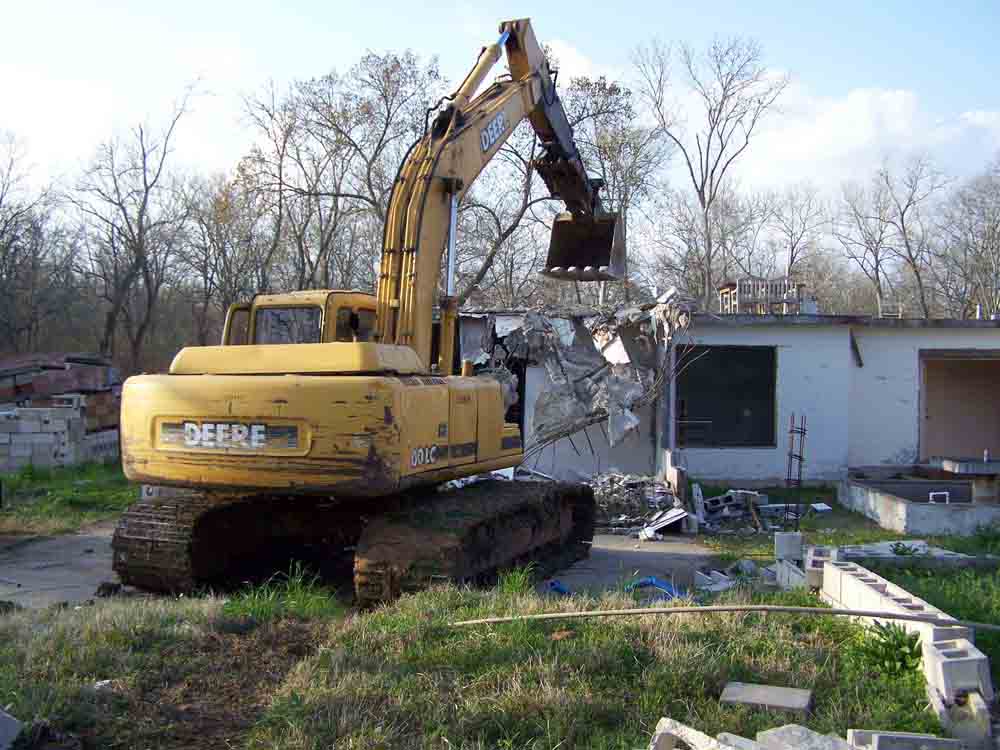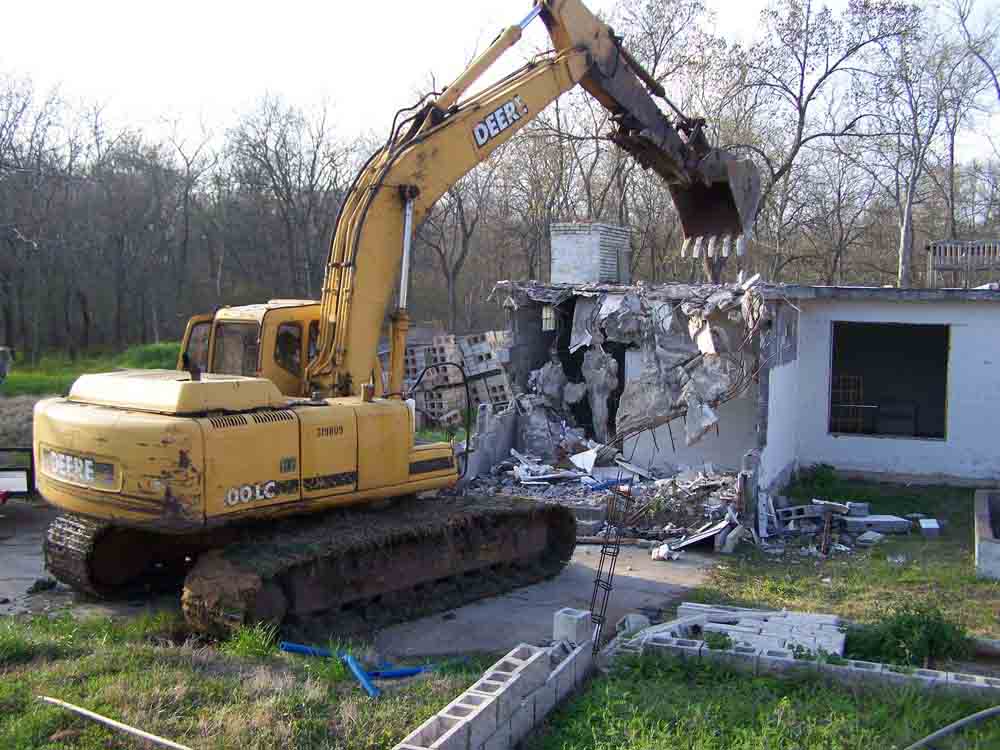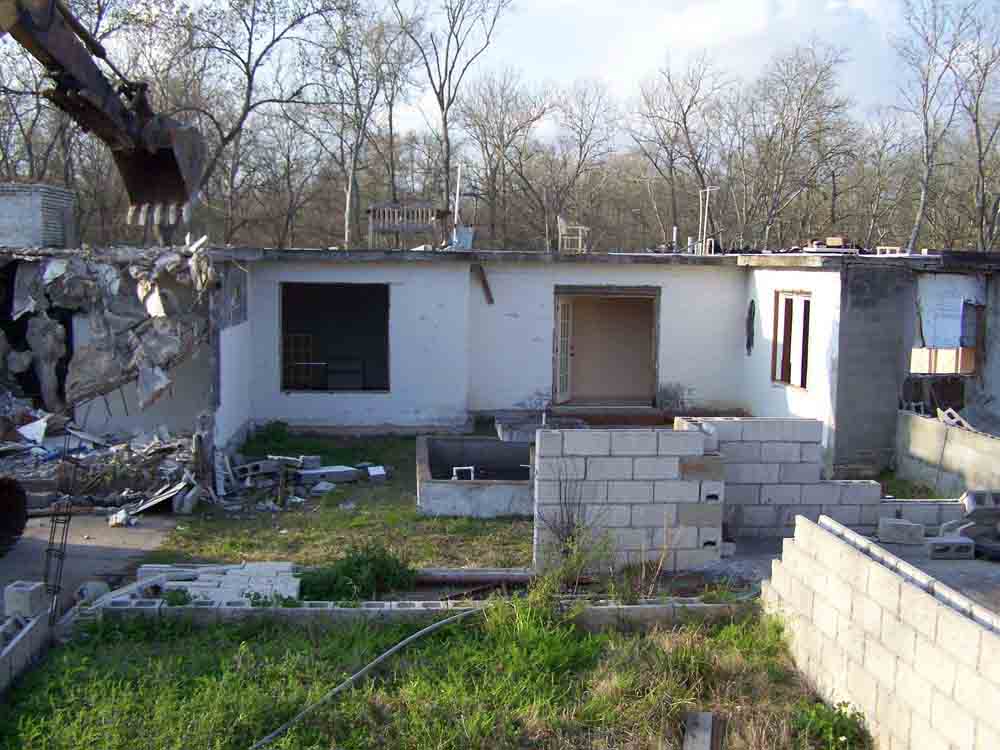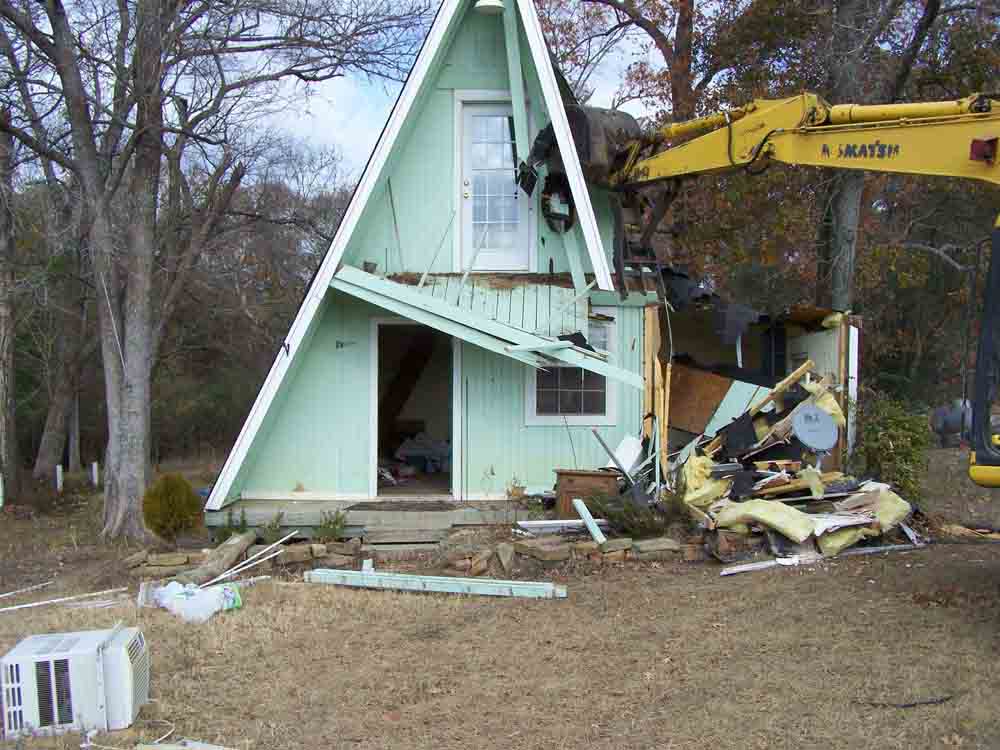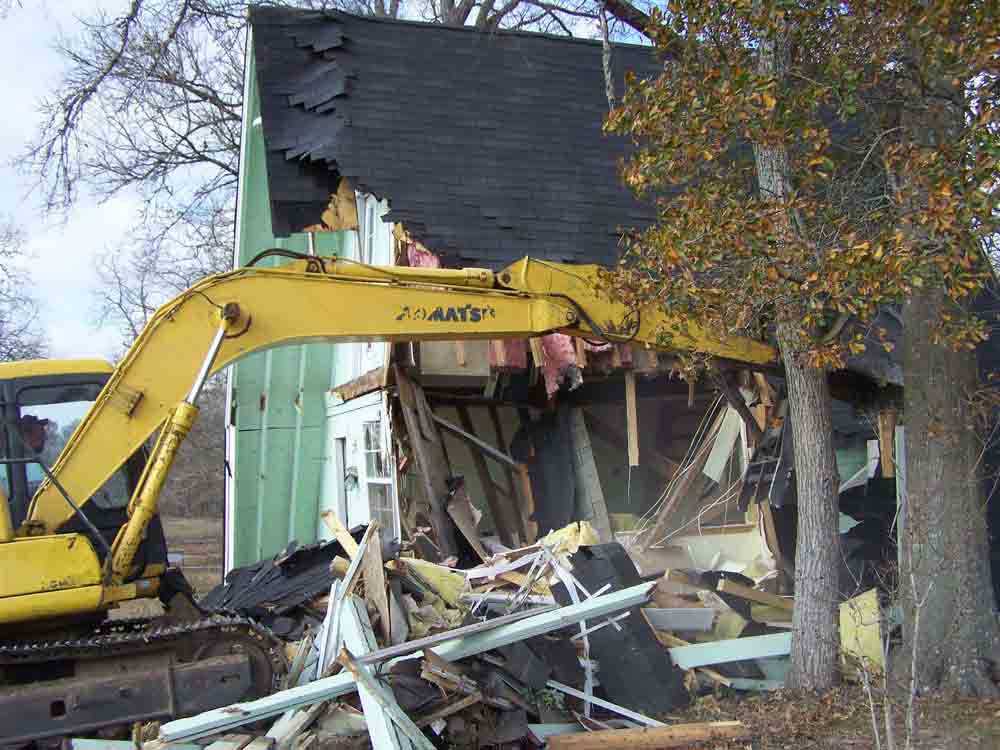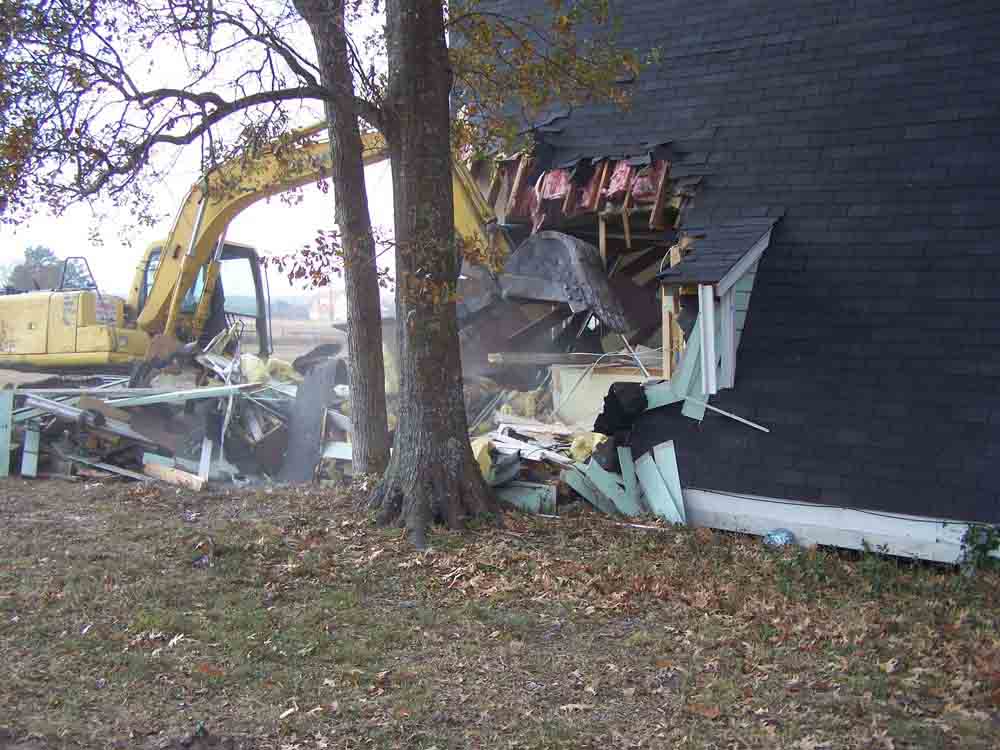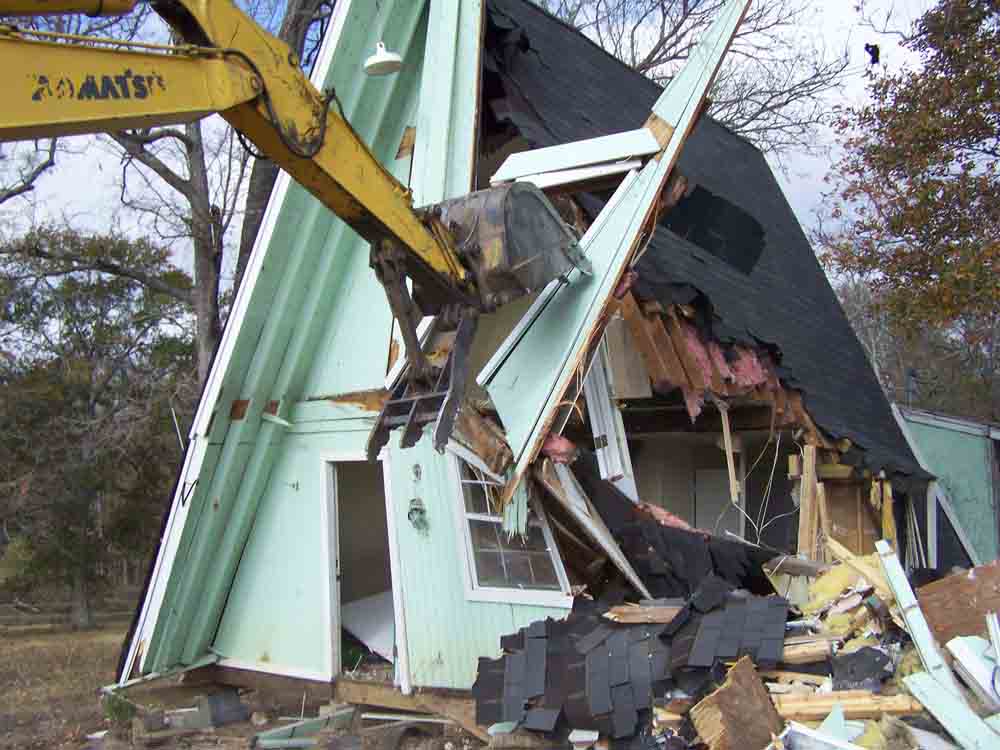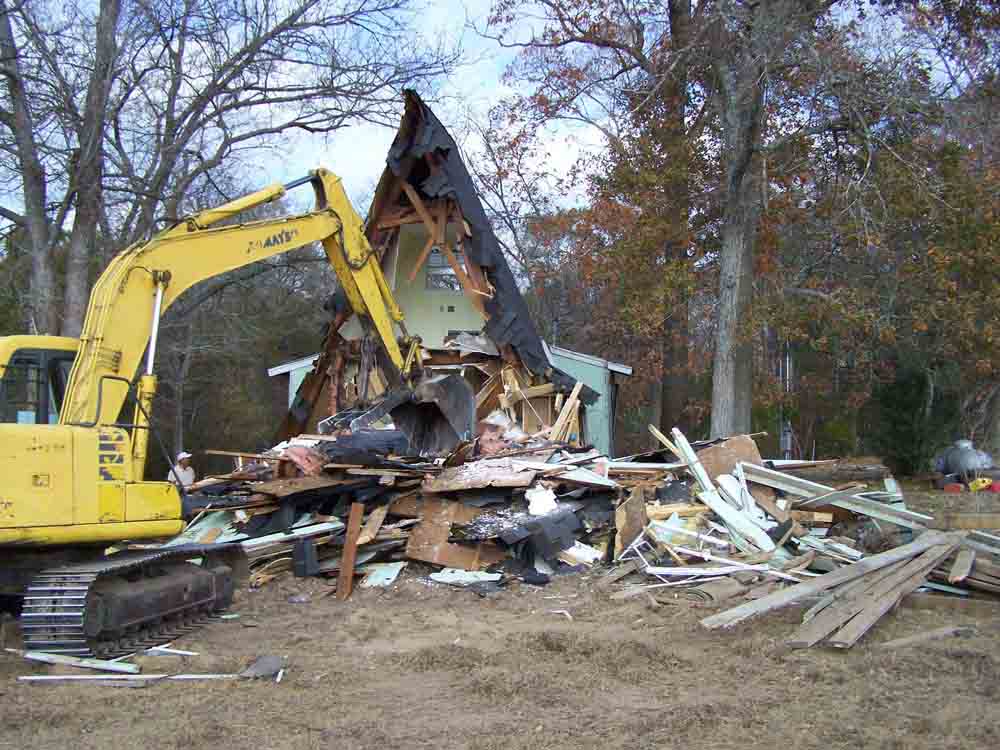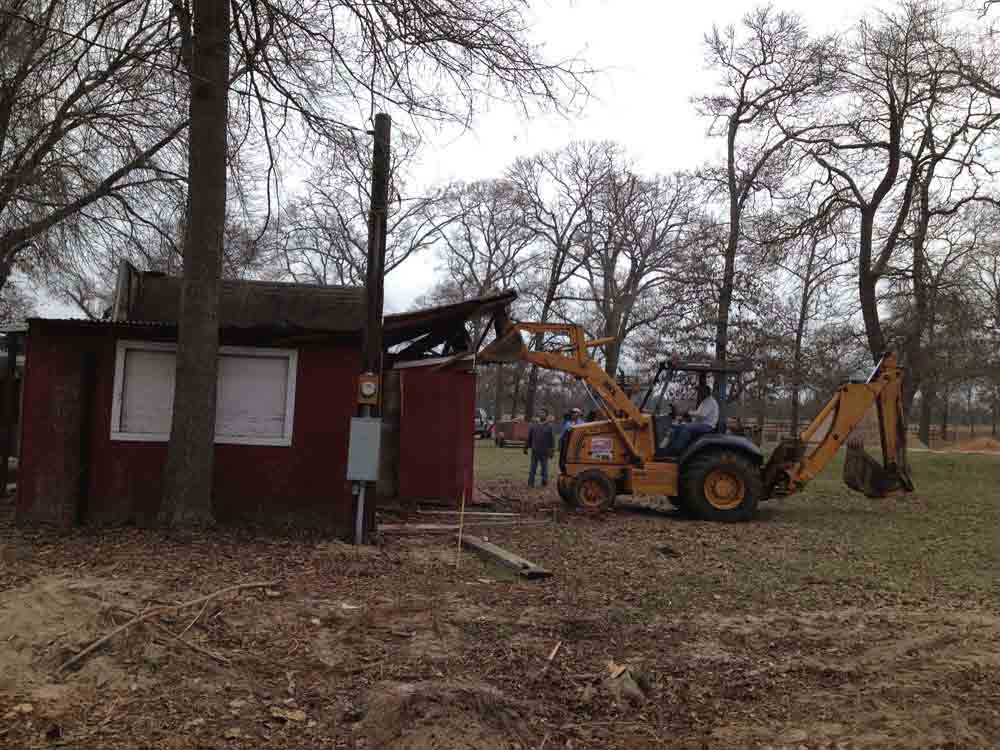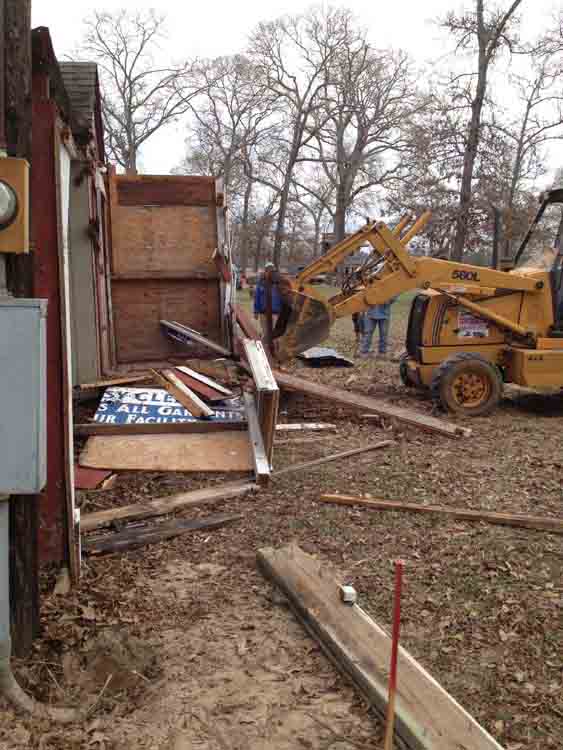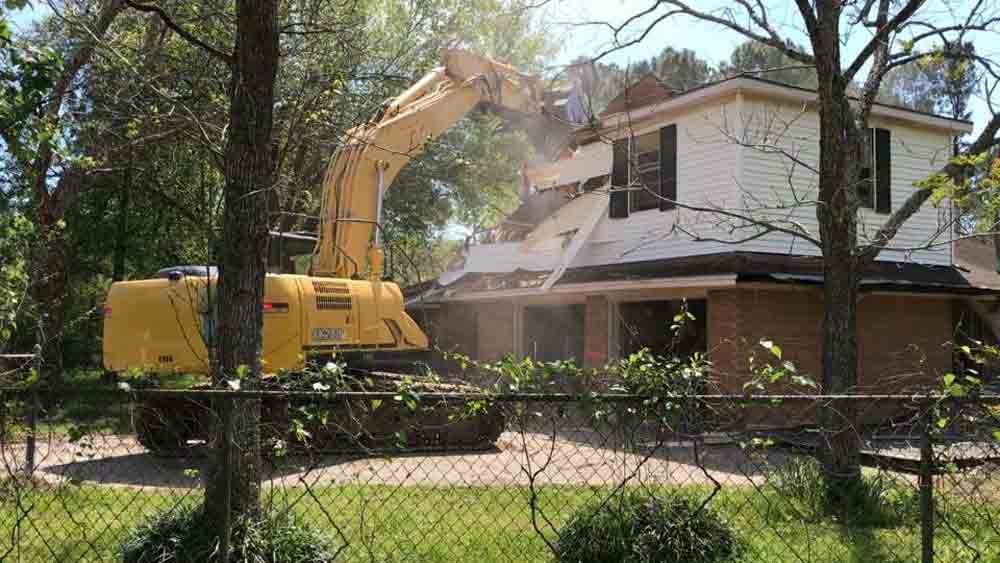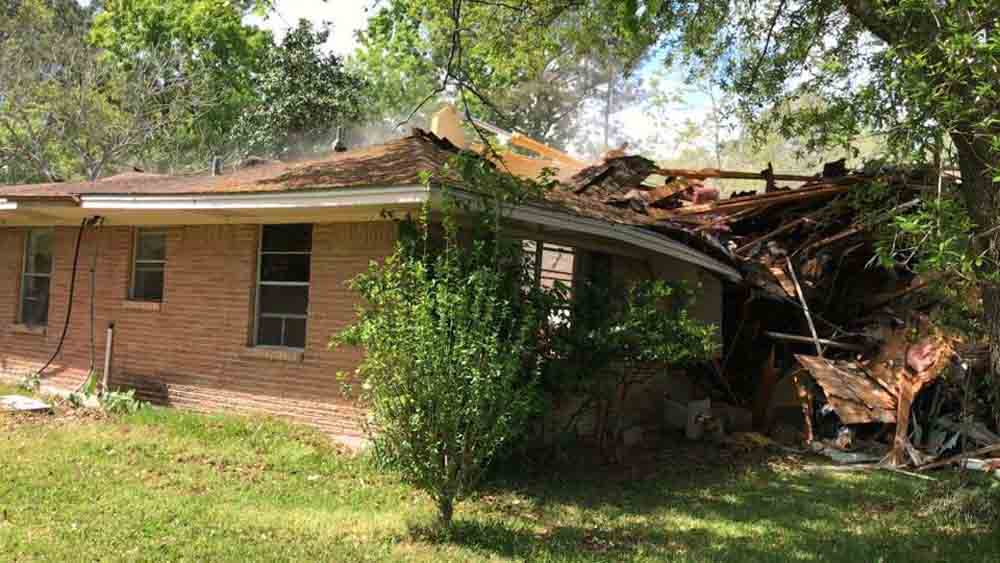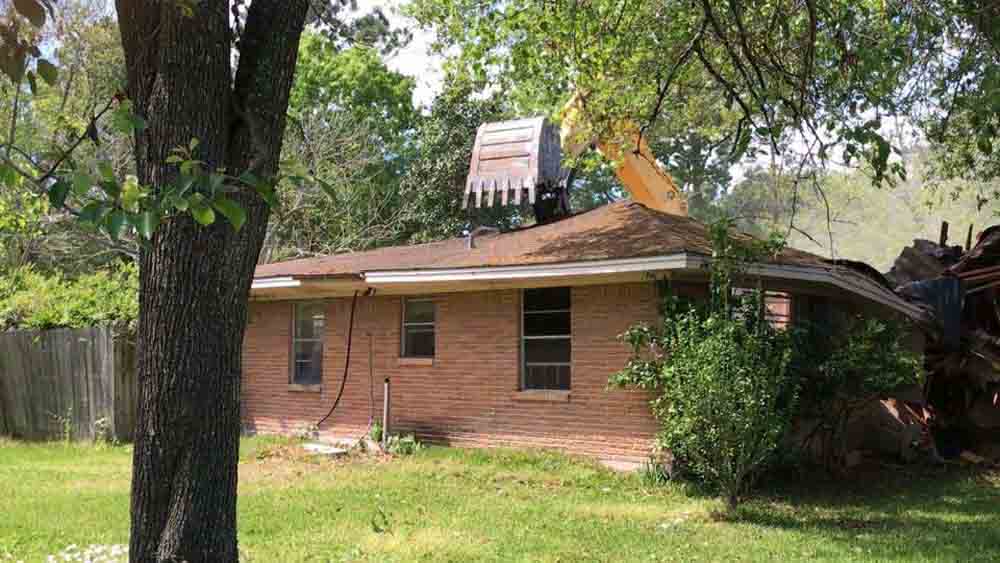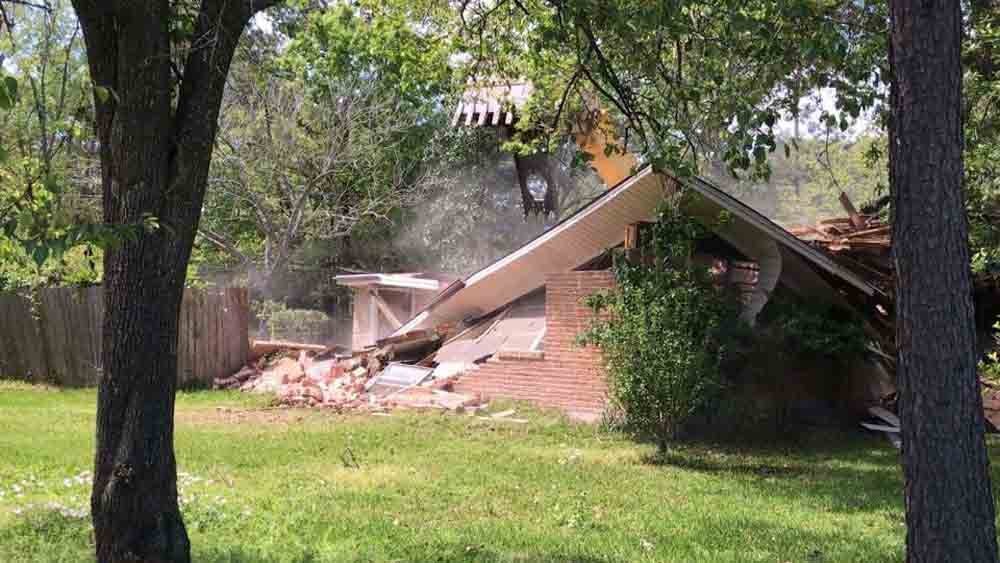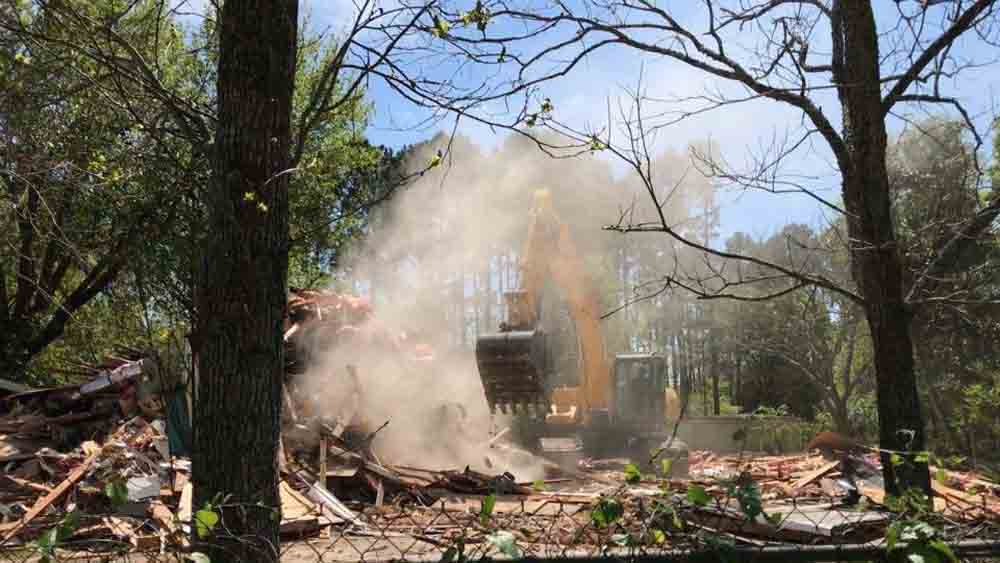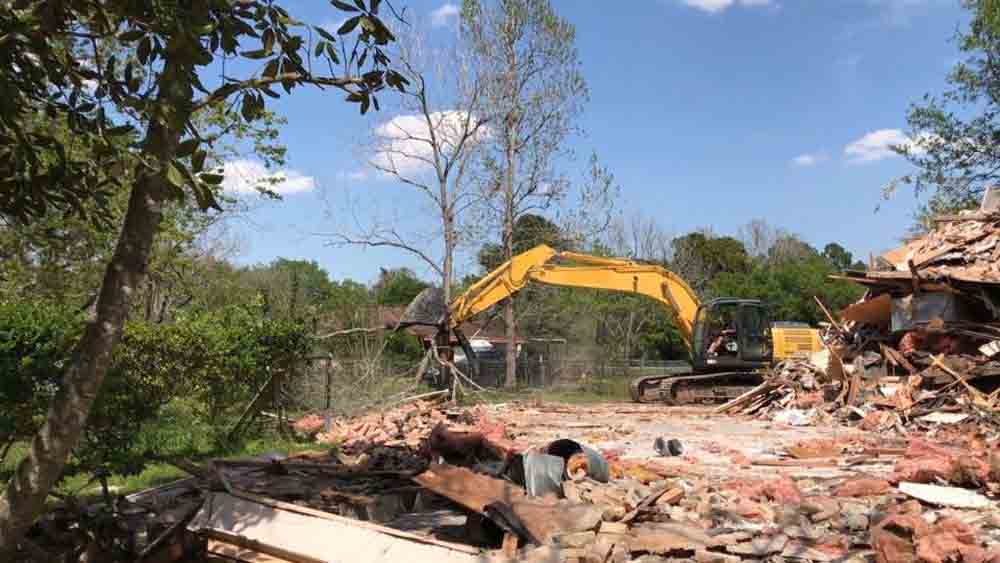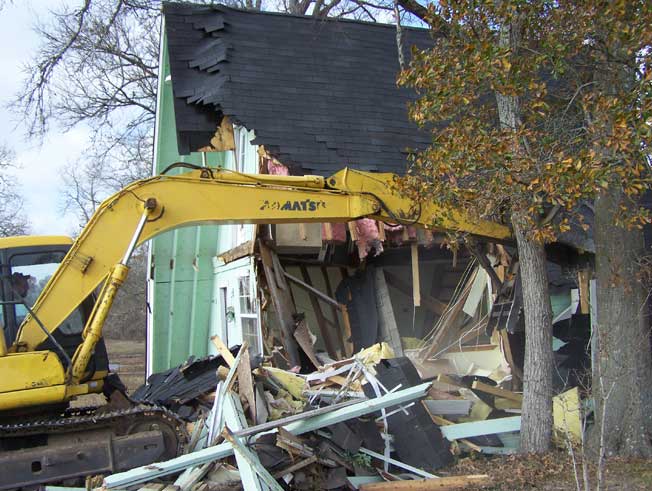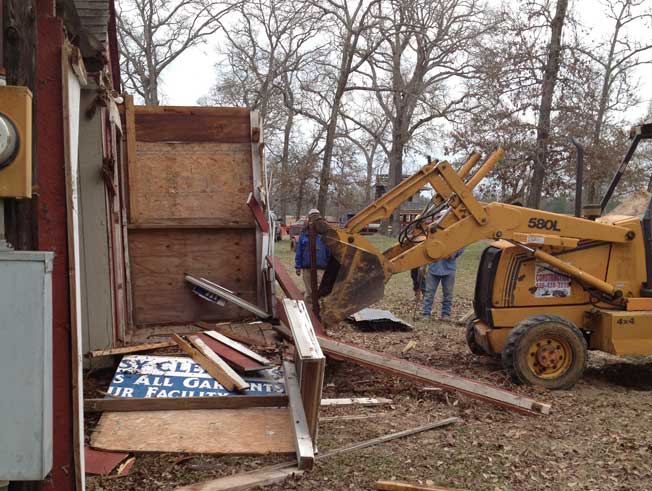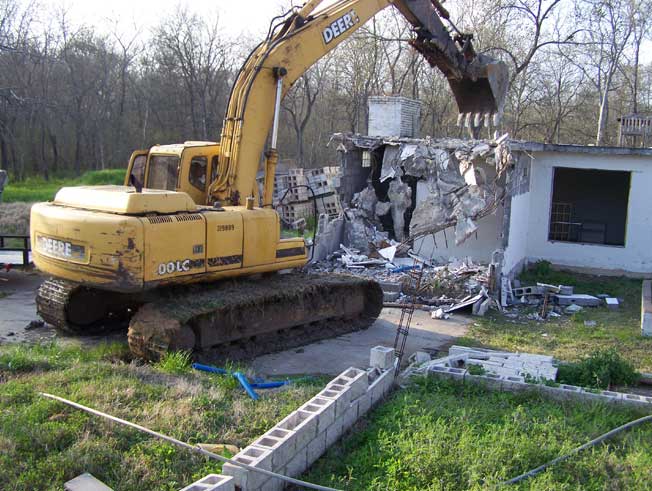
Residential Demolition Company in Magnolia, TX
Residential demolition is the task of dismantling and removing all materials that once were used in the construction of an existing inhabitable structure. Usually, the main objective for the residential demolition request of a structure, is to restore the property to its pre-construction condition. This allows the property to become a “blank canvas” for future development opportunities. To achieve this goal, several factors need to be considered which include ordinances/regulations that are attached to the property as well as the location of the structure on the property, accessibility, and magnitude of the project to name a few. It is important to remember that most structures have a designed lifespan and are built to withstand the elements. Residential demolition goes against that concept and incorporates whatever means necessary to destroy a structure that was built to endure. In other words, this is not a weekend DIY project but a specialized job that should be completed by a professional like Llewellyn’s Construction Inc.
STEPS IN RESIDENTIAL DEMOLITION
PRE-PLANNING
* Procure necessary permits, surveys and drawings/documents required by governing agencies that have jurisdiction over your property. This includes written permission from any HOA/POA’s that you may have associations.
* Hire a professional contractor like Llewellyn’s Construction Inc. who has over 20 years experience in residential demolition work.
* Contact all Utility Companies, who offer service in your area, and notify them of your upcoming residential demolition project. Have each one physically mark all lines/connections located on your property and where necessary, remove or relocate
lines that fall within the demolition area. Call 811 several days before residential demolition work begins to expedite this process and protect you from any hidden or missed lines that could be damaged during the work. Failure to notify 811 can
lead to a hefty fine of over $1000.00 if utility damage occurs during residential demolition.
* Inspection of both property and structure for potential complications. The initial walk thru should include the property owner, contractor and any other professional involved in the planning/construction process. The topography conditions of the
property is imperative to insure easy accessibility and minimal erosion issues during and after residential demolition is completed. The proximity of neighboring structures and property lines need to be considered as a proactive measure. When
inspecting the structure, pay attention to possible structural defects and/or abnormalities which could hinder the extraction process. Be on the lookout for any possible hazardous materials within the building and if discovered come up with an
appropriate plan of disposal.
CAPITALIZING ON HIDDEN TREASURES
Current design trends along with an ever growing environmental conscience has turned recycling into a highly profitable industry. Extrapolating reusable materials is very labor intensive but can provide high returns.
Recyclable materials in high demand include:
* Wood products such as baseboards, crown molding, trim, cabinets, doors and even fencing/decking materials.
* Appliances and Kitchen/Bathroom fixtures including sinks, tubs, toilets, faucets/drains and countertops can be refurbished.
* Metals found in plumbing and electrical work along with outlets, conduit, vents, light fixtures and ceiling fans.
* Concrete, tile, brick and other aggregate based materials can be recycled as is or crushed for alternative applications.
* Windows, flooring, water tanks, A/C and heating units garage doors and openers along with similar items all have value.
Ultimately, the more materials you salvage, the more potential savings. Also, the less debris means fewer containers required for haul-offs, saving you money and our landfills. It's a win win if you have the energy, resources and time.
DETERMINE METHOD FOR RESIDENTIAL DEMOLITION
There are several methods used in residential demolition ranging from, using hand tools and deconstructing the house piece by piece, to incorporating explosives taking out a structure within minutes. In residential demolition, the most common method involves the use of heavy equipment; such as excavators with a thumb attachment and/or dozers. The excavator removes a section at a time and deposits the debris immediately into a container truck for haul off. This process repeats itself until the entire structure is removed, which may or may not include the foundation. For those wanting to remove only the existing structure and replace with a new building; using the existing foundation may be an option. However, when both the structure and foundation are removed, the ground is leveled and any site work is completed to enhance the landscape for future development.
A residential demolition project can be quite an undertaking. That’s why contacting an experienced demolition contractor, like Llewellyn’s Construction, is crucial to getting the job done correctly. With over 20 years experience, in all facets of residential demolition services, Llewellyn’s Construction has the know how to demolish and remove your structure safely and efficiently while adhering to all state and local regulations.
LEARN MORE ABOUT RESIDENTIAL DEMOLITION IN OUR BLOGS
Residential Demolition Gallery
